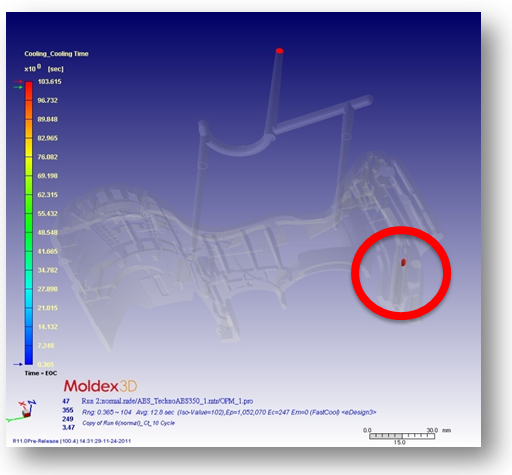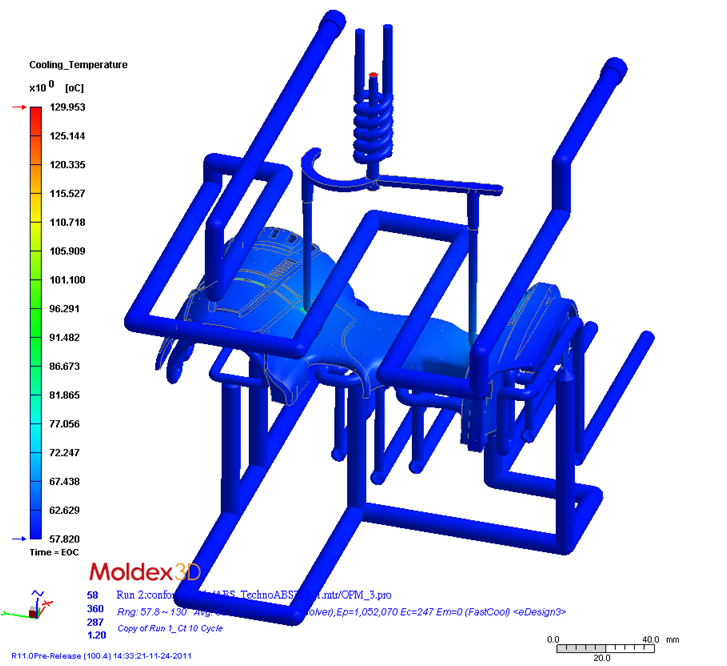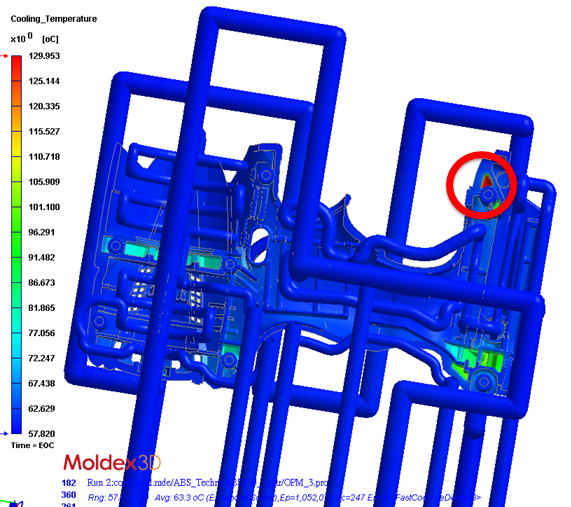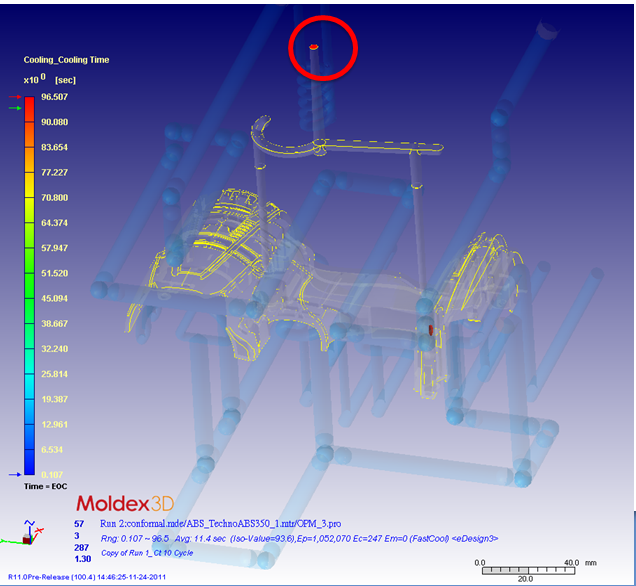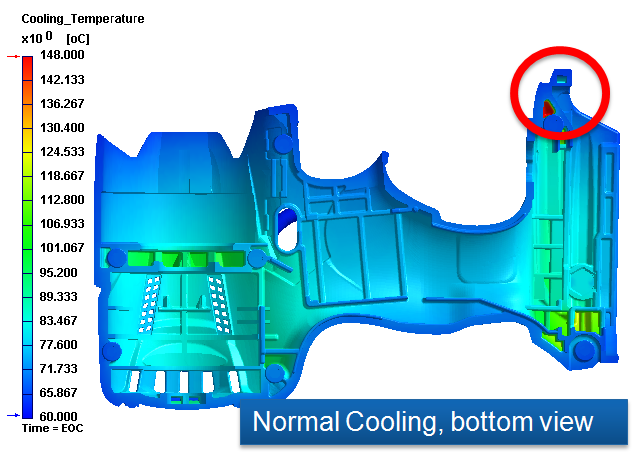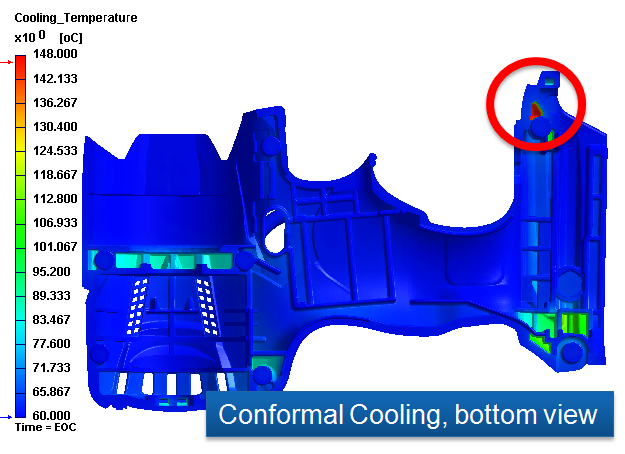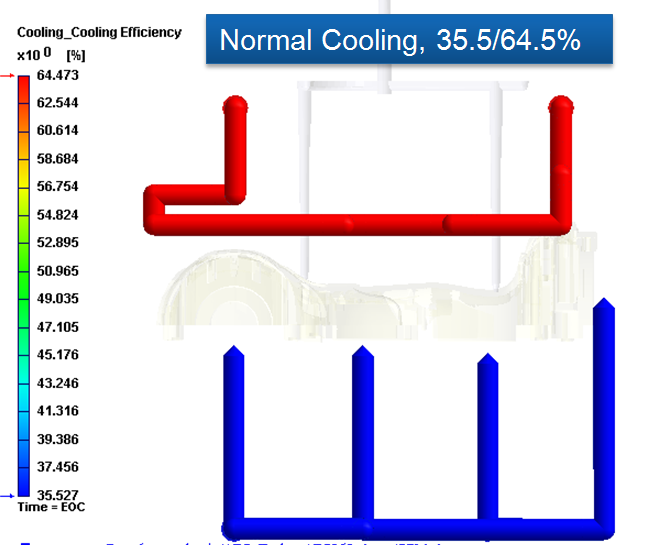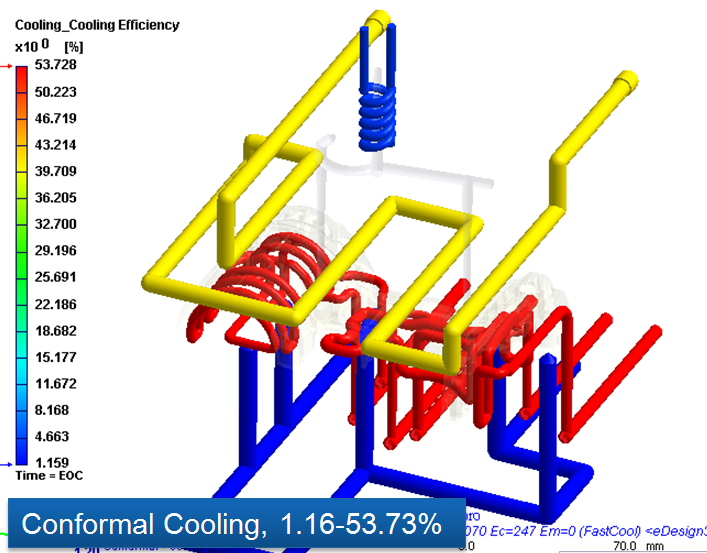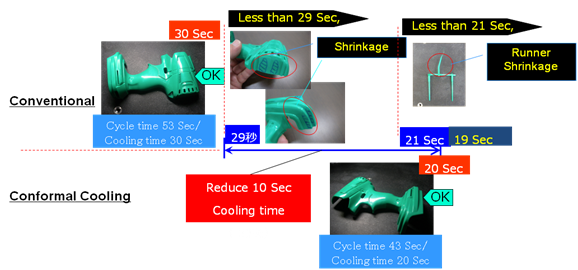A Case Study of MATSUI MFG. CO., LTD.
This case study aims to compare the cooling effect of conformal cooling with the normal cooling design. As shown in the figure below, this model has a very complex geometry. Also, thickness variation is large. With conformal cooling channel design, cooling time was dropped by 10 seconds (33%).
Traditionally, cooling channels cannot be made along with the product geometry, so that the cooling efficiency is limited, especially for those products with complicated geometry. Nowadays, the advanced manufacturing technology has made the conformal cooling possible, However, the verification and optimization of the cooling channel design become more and more difficult because of the complex geometry.
Moldex3D Cooling Analysis can help determine not only the required cooling time, but also the temperature variation inside the mold. Moreover, the coolant behavior such as coolant flow rate, pressure loss, vortex/dead water area can further be estimated by Moldex3D 3D Cooling Channel Analysis. Therefore, it’s no longer a problem to optimize the conformal cooling channel design, so as to improve the cooling efficacy.
So what Moldex3D can help in conformal cooling are:
- Increase cooling efficiency. With conformal cooling, cooling rate difference can be minimized through the whole part.
- Reduce cycle time and cost.
- Create better product quality.
First of all, the dimensions of the product is as follows:
- Length:162.23 mm
- Width:105.15 mm
- Height: 44.51 mm
- And the major thickness is around 3 mm
In this study, we are going to compare the cooling efficiency between the conventional cooling design and conformal cooling design. The conventional cooling design has baffle design in the core side, while the conformal cooling design has cooling channels tightly fit to the product geometry.
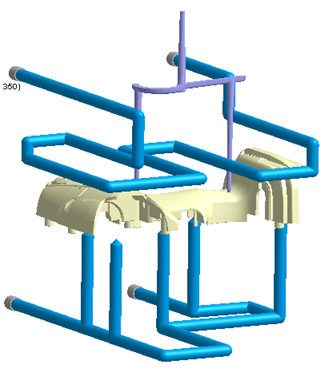
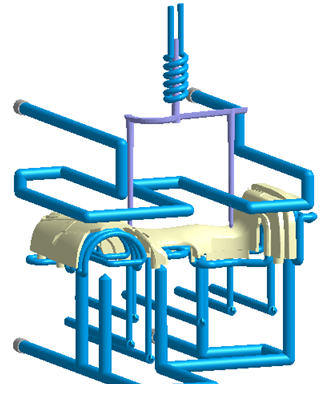
a. Conventional cooling design b. Conformal cooling design
The conformal cooling layout was drawn with same normal distance from the cavity surface to pipe. However, due to geometry limitation, there are still some places unable to locate the cooling lines. The average cooling channel diameter is 4mm; the distance from cavity surface to pipe center is 8.3mm; and the distance between pipes is 9mm.
Here below are the simulation results of these designs:
For the conventional design, the Part surface temperature distribution at the end of cooling is shown as below. The temperature range is from 60.04 – 134.02 ℃. The cavity side has a low and quite uniform temperature distribution; however, at the core side, the part surface temperature differs from area to area. The highest temperature area is indicated by the red circle. It is obvious that no cooling channel go through this area.
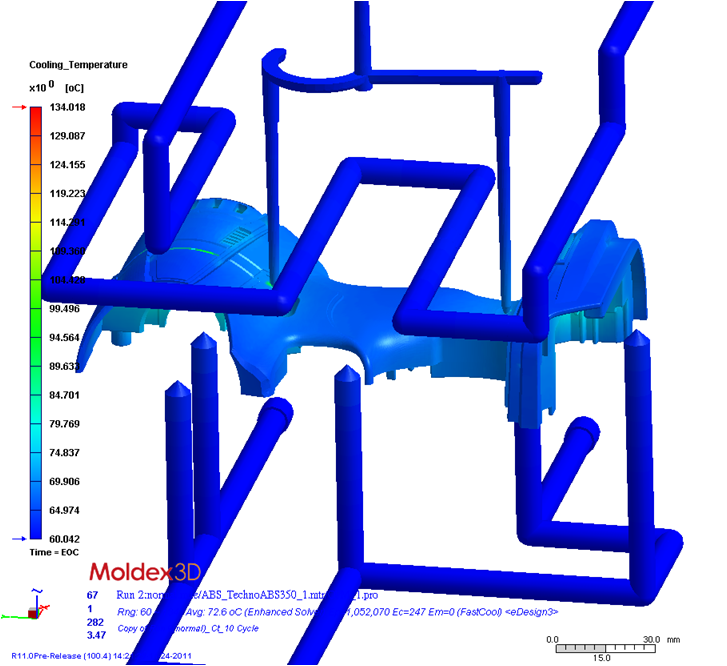 a. surface temperature is around 57.82 – 129.95 ℃
a. surface temperature is around 57.82 – 129.95 ℃
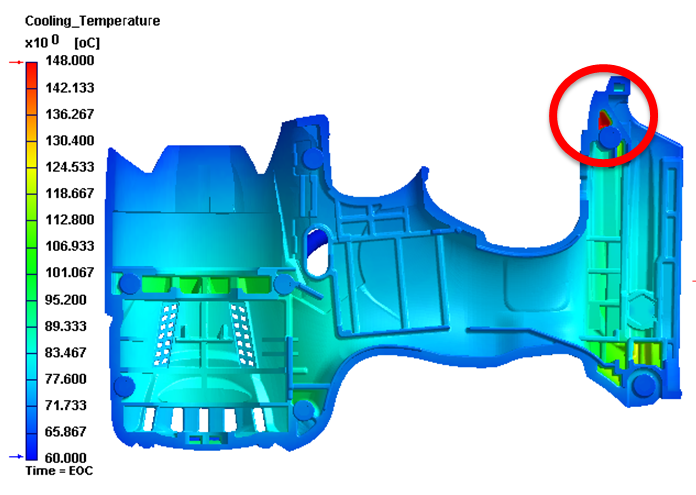 b. Highest temperature is shown in red circle.
b. Highest temperature is shown in red circle.
Below is a figure showing the required cooling time for the indicated area. The cooling time is defined as the time needed to cool down to the ejection temperature since the end of packing (EOP). As the value estimated is around 101.55 sec, the default cooling time (20sec) may not be enough.
For the conformal cooling, the part surface temperature distribution at the end of cooling is shown as below. The temperature range is from 57.82 – 129.95 ℃, which is lower than the conventional design. Besides, it can be seen that the temperature distribution at the core side are more uniform that in the conventional design.
In terms of cooling time, the Max. cooling time required is also reduced to 96.51 seconds.
If we set the same temperature range for the two cases, we can see that conformal cooling channel effectively remove most of the heat from the core side. However, the max. temperature area still exists since no cooling channel pass that area (red circles).
Below is the cooling efficiency comparison. In the conventional design, since the baffle does not reach the core side of the part, the lower cooling channel only absorbs 1/3 of the total heat. On the other hand, in the conformal cooling design, the conformal cooling channel has the highest efficiency (53.73), and conversely, the baffle cooling channel has a very low efficiency (1.16%)
The cycle time is also an improtant issue to be concerned in the cooling design. Compared to the conventional design, the conformal cooling can reduce 10 sec cycle time, or 33 %, while keeping the same product quality.
For instance, the sink mark can be used as an index for the product quality. Below are the sink mark comparison of the conventional design with 30 seconds cooling time and the conformal cooling design with 20 seconds cooling time. We can see that the sink mark values at the indicated areas are quite the same in these two cases (Normal: 0.07mm; Conformal: 0.08mm).
 Displacement 0-0.148mm Displacement 0-0.105mm
Displacement 0-0.148mm Displacement 0-0.105mm
In summary, the cooling efficiency of the conventional cooling design is limited, and hard to be improved further because the cooling channel cannot reach to the product surface. In this case, we can see that the conformal cooling design can effectively lower cooling time and improve the cooling efficiency while maintaining product quality. Moldex3D offers a useful tool to help users accurately predict the effects on conformal cooling design.
